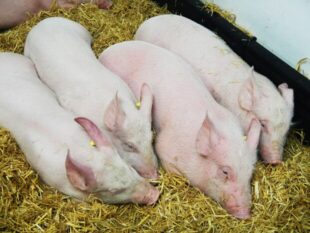https://defrafarming.blog.gov.uk/sustainable-farming-incentive-pilot-guidance-plant-trees-to-extend-existing-woodland/
Plant trees to extend existing woodland
The guidance on this page is for SFI pilot participants only. Please visit GOV.UK for the official Sustainable Farming Incentive scheme guidance.
Find out how land managers can benefit wildlife and reduce flooding and pollution by planting areas of trees next to established woodland.
If you’re completing this action as part of the Sustainable Farming Incentive pilot, how you do it is up to you.
The advice on this page can help you get better environmental and business benefits, but you do not have to follow it to get paid.
About extending a woodland
You can extend a woodland by planting areas of trees next to existing woodland. You should:
- plant an area of at least 20 metres in either width or length
- only extend a woodland onto adjacent arable land or improved grassland
Do not plant on:
- deep peat soils
- historic features
- a Site of Special Scientific Interest (SSSI)
If you’re planting more than 0.5 hectares in a single block, follow the guidance on creating woodland.
Benefits of extending a woodland
Depending on location and the type of existing woodland, by extending it you can:
- increase land roughness to slow the flow of surface water runoff
- reduce the use of materials like coal, concrete and steel by using locally grown timber and woodfuel instead
- increase links between wildlife in woodland, at woodland edges and in the surrounding landscape
- show or hide access routes or paths
- improve the appearance of existing woodland
- decrease the risk of wind damage to the existing woodland
By extending a woodland on areas with steeper slopes, trees can also:
- increase soil stability
- reduce local flooding
On arable land, extending an existing woodland can also:
- reduce agricultural spray drift
- reduce soil loss from wind exposure and heavy rainfall
Before you extend a woodland
Find out if you need an Environmental Impact Assessment from the Forestry Commission if you want to extend a woodland on to sensitive areas, or any other area above 0.5Ha. Sensitive areas include:
- protected areas, like national parks
- national or local nature reserves
- scheduled monuments
- world heritage sites
- priority open habitats, like lowland fen and upland hay meadow
Use MAGIC to identify sensitive areas on your land.
Find out if you need to get consent from the Environment Agency if you want to plant within 8 metres of a main river or drainage channel. See a map of England’s main rivers.
How to extend a woodland
Moving trees after planting will damage them. Carefully consider:
- where to plant
- what species to plant
- the planting design
If you plant faster growing species, the woodland will usually need thinning between 15 and 25 years later. If you decide to plant in rows, you can cut competing vegetation with machinery.
Where to plant
Only extend a woodland onto adjacent arable land or improved grassland.
It’s a good idea to plant in places with existing problems like soil erosion or waterlogging, as trees can:
- increase water absorption
- help stabilise the soil to reduce land slips
- help reduce soil erosion as roots bind the soil
You can extend a woodland to help hide agricultural activities and reduce public disturbance, for example where a public right of way runs near a barn or access point.
What to plant
Plant a mix of tree and shrub species. The species you choose will depend on:
- your objectives, like alder for nitrogen fixing and hazel for coppice products
- soil conditions, like moisture and nutrient availability
- the area’s current and future climate
- any pests or diseases present
- the character of the existing woodland
You could choose tree and shrub species to match the adjacent established woodland. If you want to use different species, search the Forest Research database for species that are widely grown in British woodlands.
The Ecological Site Classification map can help you find suitable species based on climate change projections for your area. Zoom in to select your area on the map and enter your soil type to find the best species suited to your local climate now and in the future.
Shrubs should not make up more than 20% of the planted mix. Shrubs are defined as species with woody growth which do not typically reach a height greater than 5 metres. These include hawthorn and spindle.
Check if existing woodland is on the Ancient Woodland Inventory. If so, only plant native species. You can plant sycamore and sweet chestnut if they are already present, as they are honorary native species.
Do not plant:
- any invasive tree species, like black cherry or Western hemlock
- ash, because of ash dieback
- gorse or sea buckthorn
It’s important the trees and shrubs you use are free from pests and diseases. Where possible, get your plants from nurseries with clear plant health management standards in place including, for example, nurseries with Plant Healthy certification or similar.
Planting design
Plant areas with a minimum of 20 metres in both width and length at the narrowest point. Plant trees between 2 and 3 metres apart. This is a planting density of 1,100 to 2,500 stems per hectare and gives trees enough space to grow well.
If you use straight rows, stagger or offset the rows to give a more natural appearance. You can follow contours or existing features such as the woodland edge or footpaths.
It’s often easier to plant trees in uniform rows, as you can:
- mark out the area to plant
- find young trees more easily after you’ve planted them
- control competing vegetation by cutting or spot spraying with herbicide around trees
- plan future management, such as thinning
Most species do not grow well under permanent shade, so it’s best to plant away from the edge of the existing canopy.
Species that demand more light, like oak, rowan and wild cherry, need greater sun exposure. Plant these further from the edge of the existing canopy.
Shade tolerant species, like beech, lime, hornbeam and yew, can grow under partial shade. You can plant these closer to the edge of the existing canopy.
In choosing a planting design, consider:
- how the landscape will look at the various stages of growth
- long-term management of new trees, especially if you plan to coppice
It’s best to plant a mixture of species as this will improve plant diversity in the long term. Faster growing species, like birch and alder, will outcompete slower growing species like oak and hornbeam.
If you plant trees with similar growth rates in groups of the same size, short-term growth may look more artificial than the diverse appearance of existing woodland. Having a greater species and structural diversity is also better for wildlife.
You’ll get the most benefits if you plant in groups of species, mixing shapes and sizes of those groups. This can give a more natural appearance which can blend better with the existing woodland. If you plant trees with similar growth rates in groups of the same size, short-term growth may look more artificial.
If you plan to coppice in future, species like hazel do not regrow well under heavy shade from an overhead canopy. Here it’s better to plant trees:
- with wider spacing (3 metres by 3 metres)
- in groups of at least 12 metres in diameter
- surrounded by slower-growing species
This reduces competition for light and helps encourage successful coppice regrowth.
If you’re using shrubs, plant them in-between tree species across the whole area. Woodland shrubs generally tolerate shade and will help form the developing undergrowth.
You can plant shrubs as a group of species. Groups of shrubs will form a separate lower canopy. This will create a diverse habitat and visual structure to the woodland.
When to plant
Nurseries supply trees either bare-rooted or cell-grown. Nurseries grow bare-grown trees in prepared outdoor beds, and cell-grown trees in a compost plug or cell.
Bare-rooted stock is lifted from nursery beds for delivery between late autumn and early winter. Plant bare-rooted trees between November and February, depending on weather conditions and location.
Ask your nursery for advice on the best time to plant cell-grown tree stock.
How to protect newly planted trees
Protect newly planted trees to make sure they grow well. Without the correct protection, trees and shrubs are vulnerable to damage by:
- competing plants like brambles and bracken
- pest species like field voles, rabbits and deer
- poultry and livestock
You can protect trees using:
- spirals with a supporting bamboo cane
- shelters with supporting timber stakes
- fencing
Use the correct height of tree protection for the largest pest species you identify. For individual tree protection against:
- field voles, use 20cm guards with bamboo cane
- rabbits, use 60cm spirals with bamboo cane or shelters with timber stakes
- hares, use 75cm spirals with bamboo cane or shelters with timber stakes
- muntjac and roe deer, use 1.2 metres shelters with timber stakes
- red, fallow and sika deer, use 1.8 metres shelters with timber stakes
You’ll usually need fencing to protect newly planted trees from livestock. Contact your local archaeology department before putting up fences on historic features. You must get consent from Historic England if you plan to use fencing on a scheduled monument.
You can also use fencing to exclude pests such as rabbits and deer. Use the minimum recommended fencing heights and mesh specification for the species. For fencing against:
- rabbits, use 0.9 metres with 31mm hexagonal mesh
- hares, use 1.05 metres with 31mm hexagonal mesh
- muntjac, roe and fallow deer, use 1.5 metres with 80mm by 80mm mesh (muntjac) or 150mm by 200mm mesh (roe and fallow)
- red, fallow and sika deer, use 1.8 metres with 300mm by 220mm mesh
- sheep, use 1 metre with 150mm by 150mm mesh
- cattle, use 1 metre with 300mm by 300mm mesh
Read about how to apply for grants for capital items, including fencing. Read a best practice guide to forest fencing from the Forestry Commission.
You may also need to control damaging species like deer.
How to maintain newly planted woodland
Protect all trees from damage until they’re well established.
You can control competing vegetation by spot spraying with herbicide or cutting. Do not spot spray with herbicides next to watercourses.
Maintain all tree protection measures like individual spiral guards, shelters or fencing. Replace any that fail.
Replace any trees that fail within the first 5 years after planting. After 5 years, any replacement trees are more likely to be over-shaded.
Within 15 years of planting you should see:
- healthy, vigorous growth of all trees
- trees that form a closed canopy
Find out more about how to maintain newly-planted trees.




 The
The 